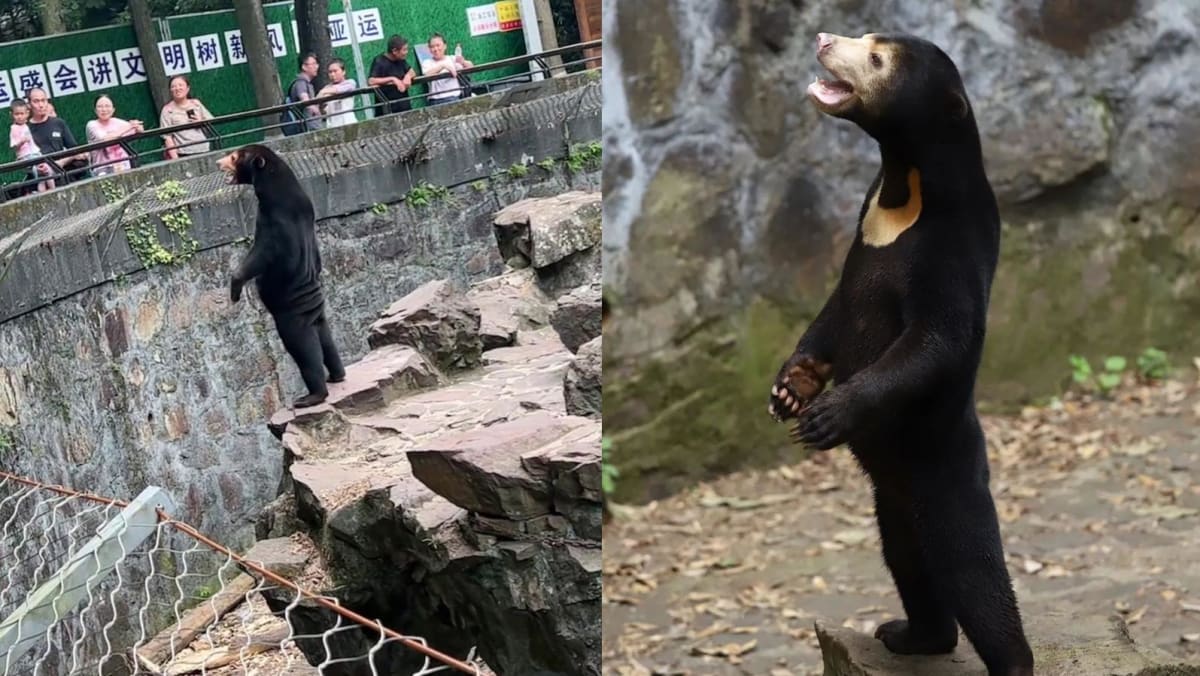Commentary: Here’s why people mistook sun bear in China zoo for human in costume

Sun bears, properly known as Helarctos malayanus, are listed as “vulnerable” on the International Union for the Conservation of Nature’s red list of threatened species. This means sun bears urgently need protection.
Six out of the world’s eight bear species are threatened with extinction. South China is part of the natural range of sun bears but very few are left in the wild in China. The majority of the remaining wild sun bear population lives in Malaysia, Thailand, Laos, Cambodia, India, Bangladesh and Myanmar.
Sun bears can live over 20 years but are slow to mature. Mothers invest a lot of care into raising their one or two cubs and don’t get pregnant again until their cubs become independent, at around three years old. It’s why males of most bear species often try to kill a female’s cub, to cause her to become receptive to mating. She won’t engage if she has cubs.
Like all Asian bear species, sun bears are poached for bile from their gall bladders, which is used in traditional medicine. They are also killed for their paws, which are eaten as an expensive delicacy. International trade in these bear parts is banned under the Convention on International Trade in Endangered Species but enforcement is inadequate.
China is working to improve wildlife protection with stricter laws and by designating more national parks.
Zoos worldwide are also playing an important role in educating the public about conservation. For many years, China has focused its efforts on protecting the giant panda. Panda conservation is driven by the iconic status of pandas both in China and abroad.
But thanks to Angela, another bear species is now sharing the attention.
Chris Newman is Research Associate, University of Oxford. Christina Buesching is Professor of Zoology, University of British Columbia. Dingzhen Liu is Professor of Zoo Animal Behaviour, Beijing Normal University. This commentary first appeared on The Conversation.
Source: CNA















